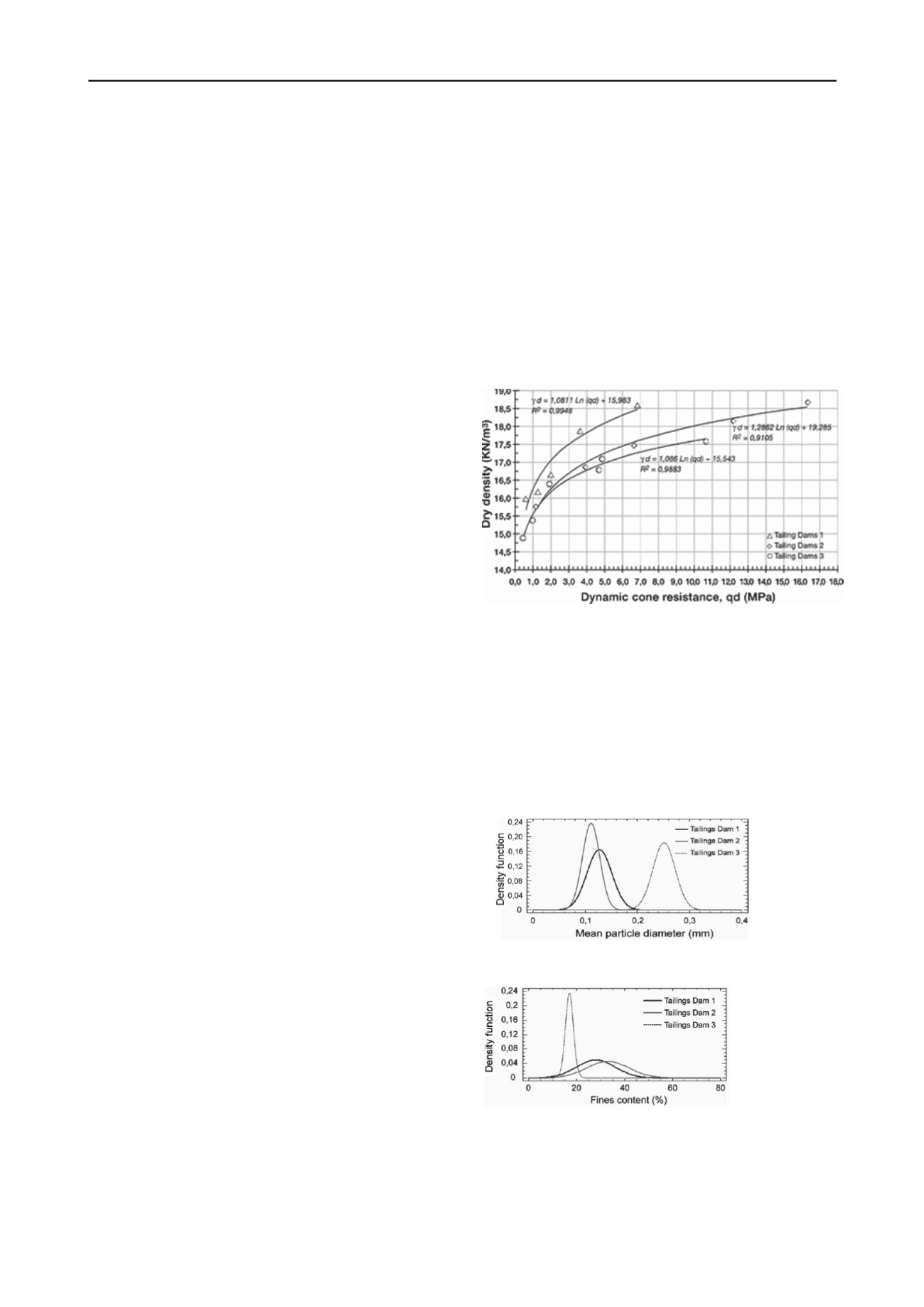
1472
Proceedings of the 18
th
International Conference on Soil Mechanics and Geotechnical Engineering, Paris 2013
(Australian Commission on Large Dams) document entitled,
‘Guidelines for the Design, Construction, Operation and
Closure of Tailings Dams’ recommends that the design
earthquake should be the Maximum Credible Earthquake
(MCE). Concurrent with the ANCOLD tailings document
(which is a revision of the 1999 version), the ANCOLD
‘Guidelines for the design of dams for earthquake’ are also
being revised. This latter document provides advice on design
earthquakes, and although at the time of writing the final
version had not yet been released, implications of the document
are that for a large proportion of the country where mining
occurs (and thus TSFs occur), design earthquakes will exceed
7.4 magnitude.
There is understandably some concern that current practices
might be found wanting, should a large seismic event occur.
Similarly, there is increasing recognition that simple, robust and
inexpensive techniques for evaluating susceptibility to failure of
TSFs due to earthquake loading is highly desirable. This paper
suggests such a technique, and describes a proposed procedure
for ongoing monitoring and testing that will reduce uncertainties
associated with current practices.
3 MONITORING OF IN-SITU STATE
The key factor determining the susceptibility of tailings to
liquefaction during a seismic event is the in-situ dry density of
the tailings, and how the in-situ value relates to parameters such
as the maximum and minimum dry density for the same
material. These latter parameters are determined in the
laboratory using standard procedures. If tailings are sufficiently
dense (close to the maximum dry density), they will dilate upon
loading, thus generating negative pore water pressures.
Liquefaction is not a risk under these conditions, even under
prolonged cyclic or dynamic loading (although significant
displacements might still occur). Any programme of in-situ
testing should therefore focus on determination of the in-situ
density, and indeed more importantly the in-situ state, where
‘state’ is a measure of the difference between the in-situ density
and the density at some, previously defined condition. This
latter condition is usually defined by the Steady State Line
(SSL), where the SSL defines the combination of void ratio and
effective stress (either vertical or mean values) which renders
the material in question either susceptible to liquefaction
(contractive behaviour) or not susceptible (dilative behaviour).
There is a large amount of literature on the laboratory testing of
tailings to determine the SSL, but relatively little on techniques
to determine state in-situ. One major exception is the work by
Jefferies and Been (2006).
There are a range of techniques to measure in-situ
parameters such as strength and density, including boreholes
with laboratory testing of (supposedly) undisturbed samples,
sonic testing, cone penetrometers, piezocones, dilatometers,
SPT, or a range of seismic techniques. The currently preferred
approach to determining in-situ state is the use of the piezocone.
The disadvantages of this technique, especially when working
with mine tailings, are cost, availability and access. Many mine
sites in Australia are relatively remote and in order to conduct a
piezocone testing campaign requires much forward planning
and scheduling, particularly with the limited availability of
suitable equipment. In addition, there is the need to be able to
carry out tests on a regular (perhaps weekly) and ongoing basis
during construction operations, such as during an upstream wall
lift. The PANDA lightweight penetrometer provides a
potentially valuable alternative technique, although it is
certainly not as versatile as the piezocone device, because it
cannot measure pore water pressures.
3.1
The PANDA penetrometer
The PANDA was developed in France (see Chaigneau et al,
2000) and is a lightweight, highly portable, dynamic
penetrometer that is conventionally used in quality control
applications, particularly compaction control for cohesionless
materials. It is very quick to set up and can be used by a single
operator. The portability has been found to be particularly
useful when accessing sloping terrain, such as the downstream
face of a TSF. It is a variable energy device (where the energy is
simply derived from the force of the hammer blow to the anvil)
and can be used for very loose deposits, as well as to detect
layering in deposits containing both dense and loose layers
(such as some TSFs). It has been used extensively in Chile and
is now one of the most widely accepted techniques by regulators
in that country for quality control of the compaction of
downstream TSFs.
Results from an extensive testing campaign on three
different copper TSFs in Chile are shown in Figure 1, where the
PANDA tip resistance is designated as q
d
.
Figure 1. Demonstration of results obtained with PANDA penetrometer
on three different tailings storage facilities. Note the difference in cone
resistance for the same value of density.
From the results shown in Figure 1, it appears that there is no
unique relationship between dry density and cone resistance;
rather, this relationship appears to be dependent on the nature of
the tailings tested. Further investigation showed significant
variability between the tailings obtained from the three TSFs in
question. Figures 2 and 3 illustrate this variability, in terms of
mean particle diameter (d
50
) and percentage fines (in this case
defined as < 80μm) respectively.
Figure 2. Variability of tailings from three different TSFs; variability
measured in terms of mean particle size.
Figure 3. Variability of tailings from three different TSFs; variability
measured in terms of percentage finer than 80μm.
These results emphasise the need to carry out site-specific
correlations between PANDA tip resistance and relative density.
A universal correlation clearly does not exist. This is not a
particularly restrictive consideration, as a typical TSF will be
constructed over a number of years and any changes in the


